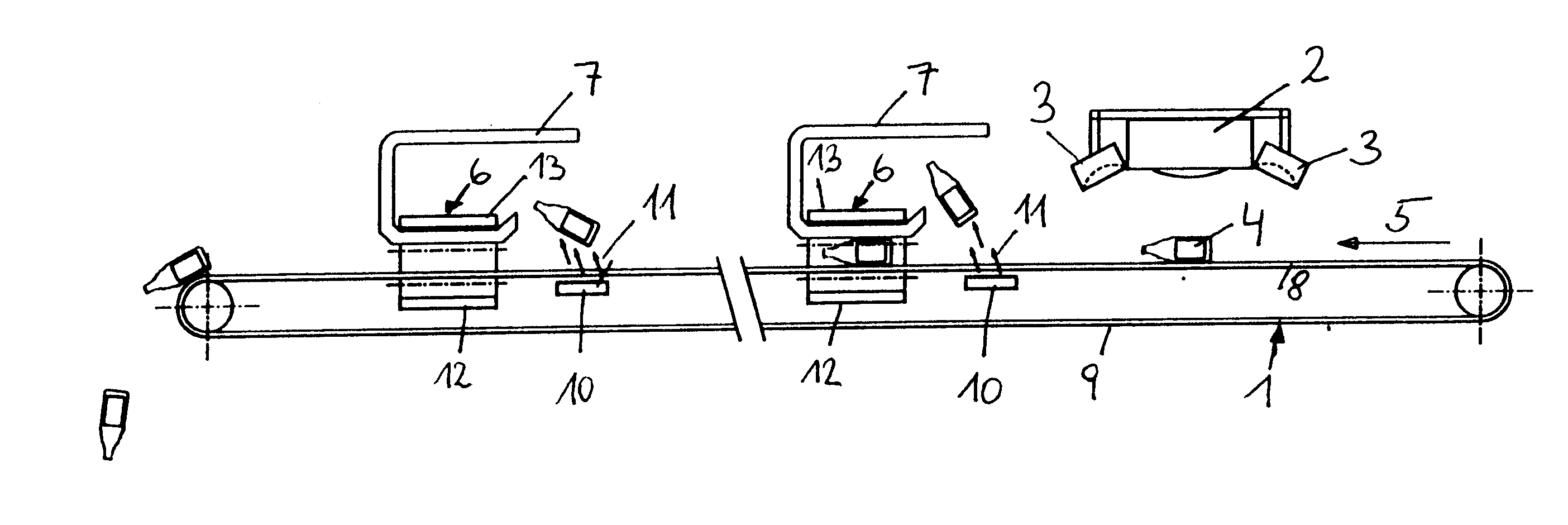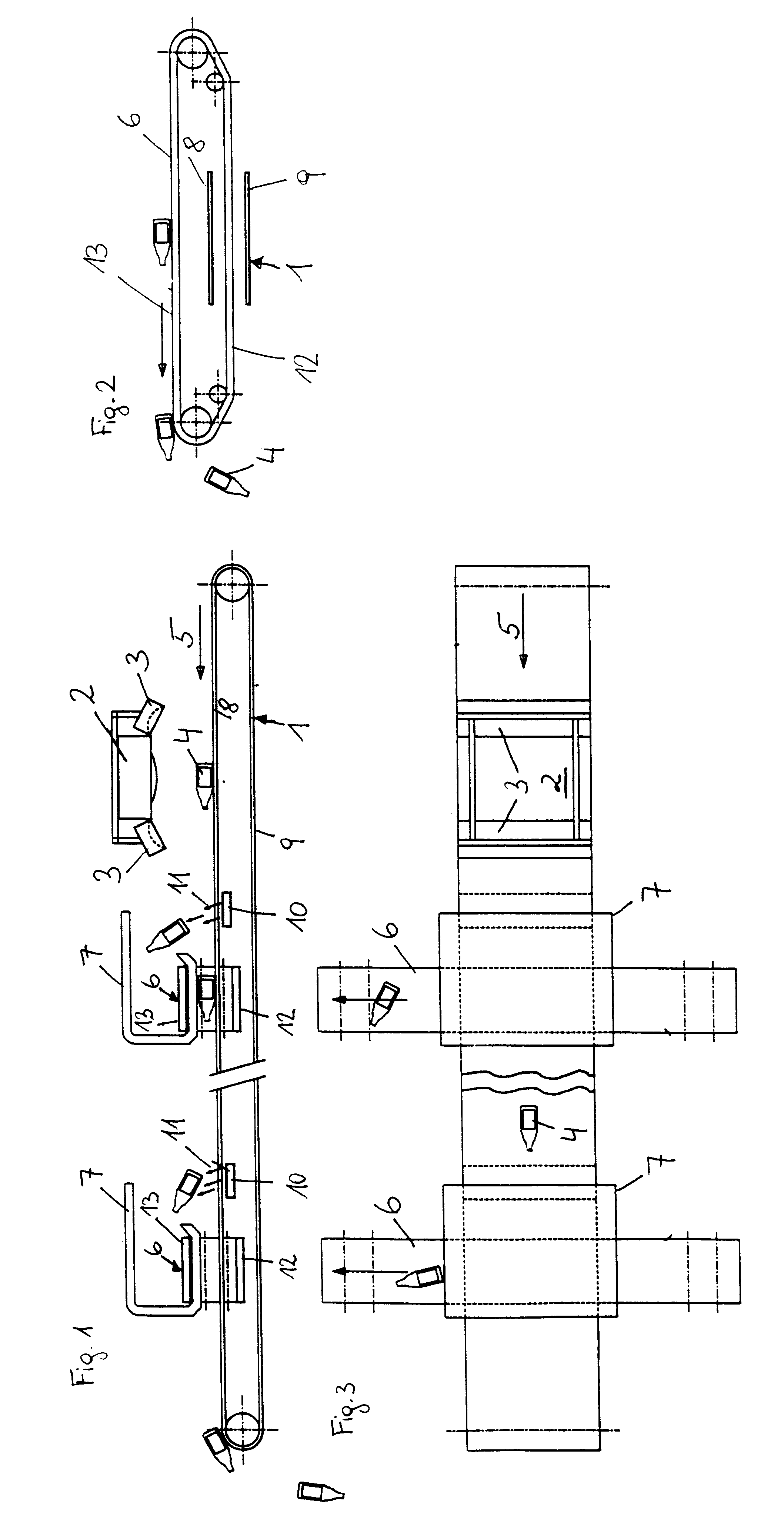Apparatus for sorting waste materials
- Summary
- Abstract
- Description
- Claims
- Application Information
AI Technical Summary
Benefits of technology
Problems solved by technology
Method used
Image
Examples
Embodiment Construction
As depicted in FIG. 1, a sensor 2 is arranged above a conveyor belt 1, on the side of which are arranged lamps 3 which emit light of different wavelengths. Waste material 4 is disposed on the conveyor belt 1, in particular plastic waste such as hollow parts made of PVC, polyethylene or plastic foils, etc.. Removal devices 6 such as conveyor belts are arranged transversally to the conveying direction 5 downstream of sensor 2 as seen in the conveying direction, which removal devices are encompassed along their direction of conveyance in the zone of the conveyor belt 1 by catching devices 7 which in their cross section are substantially U-shaped.
Blow-out nozzles 10 are arranged in the conveying direction 5 upstream of the removal devices 6 below the upper strand 8 and above the lower strand 9 of the conveyor belt 1 in such a way that their blow-out direction 11 is aimed upwardly in the direction towards the removal device 6.
The sorting apparatus in accordance with the invention works a...
PUM
| Property | Measurement | Unit |
|---|---|---|
| Color | aaaaa | aaaaa |
Abstract
Description
Claims
Application Information
 Login to View More
Login to View More - R&D
- Intellectual Property
- Life Sciences
- Materials
- Tech Scout
- Unparalleled Data Quality
- Higher Quality Content
- 60% Fewer Hallucinations
Browse by: Latest US Patents, China's latest patents, Technical Efficacy Thesaurus, Application Domain, Technology Topic, Popular Technical Reports.
© 2025 PatSnap. All rights reserved.Legal|Privacy policy|Modern Slavery Act Transparency Statement|Sitemap|About US| Contact US: help@patsnap.com


